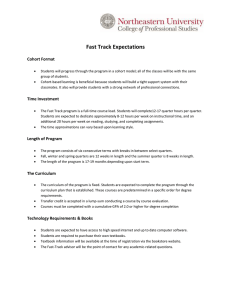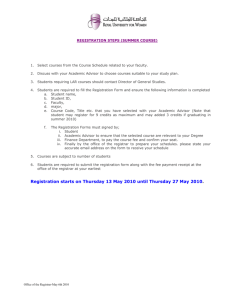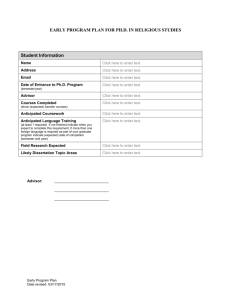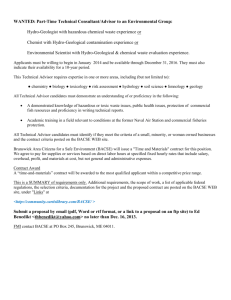School of Social Work doctoral Program
advertisement
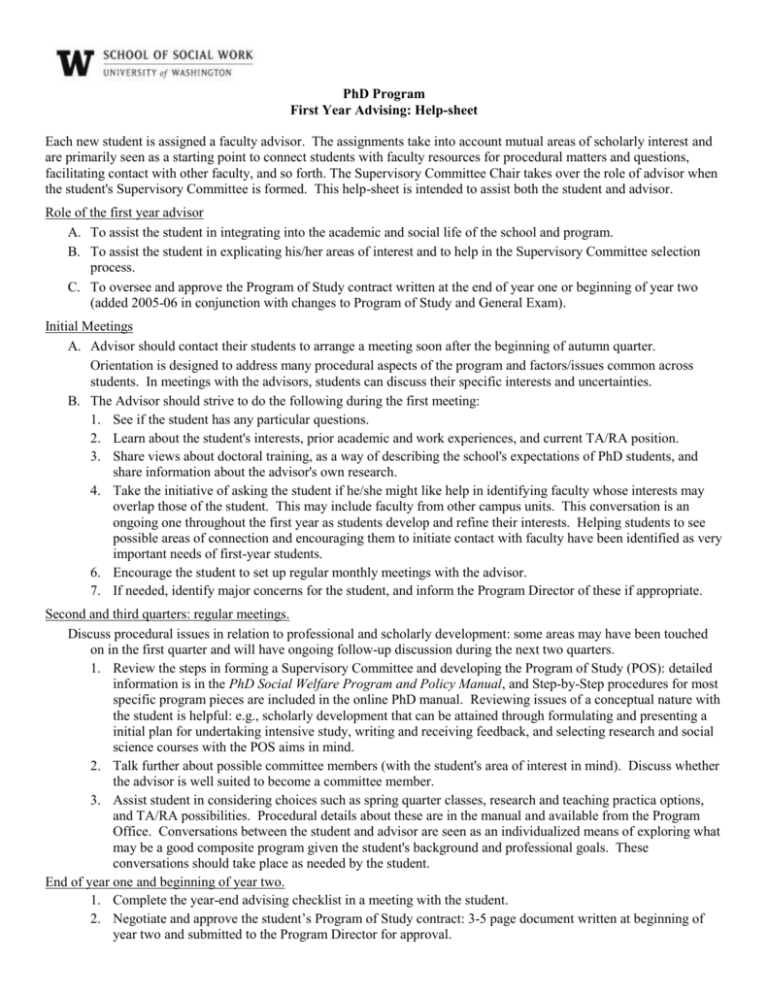
PhD Program First Year Advising: Help-sheet Each new student is assigned a faculty advisor. The assignments take into account mutual areas of scholarly interest and are primarily seen as a starting point to connect students with faculty resources for procedural matters and questions, facilitating contact with other faculty, and so forth. The Supervisory Committee Chair takes over the role of advisor when the student's Supervisory Committee is formed. This help-sheet is intended to assist both the student and advisor. Role of the first year advisor A. To assist the student in integrating into the academic and social life of the school and program. B. To assist the student in explicating his/her areas of interest and to help in the Supervisory Committee selection process. C. To oversee and approve the Program of Study contract written at the end of year one or beginning of year two (added 2005-06 in conjunction with changes to Program of Study and General Exam). Initial Meetings A. Advisor should contact their students to arrange a meeting soon after the beginning of autumn quarter. Orientation is designed to address many procedural aspects of the program and factors/issues common across students. In meetings with the advisors, students can discuss their specific interests and uncertainties. B. The Advisor should strive to do the following during the first meeting: 1. See if the student has any particular questions. 2. Learn about the student's interests, prior academic and work experiences, and current TA/RA position. 3. Share views about doctoral training, as a way of describing the school's expectations of PhD students, and share information about the advisor's own research. 4. Take the initiative of asking the student if he/she might like help in identifying faculty whose interests may overlap those of the student. This may include faculty from other campus units. This conversation is an ongoing one throughout the first year as students develop and refine their interests. Helping students to see possible areas of connection and encouraging them to initiate contact with faculty have been identified as very important needs of first-year students. 6. Encourage the student to set up regular monthly meetings with the advisor. 7. If needed, identify major concerns for the student, and inform the Program Director of these if appropriate. Second and third quarters: regular meetings. Discuss procedural issues in relation to professional and scholarly development: some areas may have been touched on in the first quarter and will have ongoing follow-up discussion during the next two quarters. 1. Review the steps in forming a Supervisory Committee and developing the Program of Study (POS): detailed information is in the PhD Social Welfare Program and Policy Manual, and Step-by-Step procedures for most specific program pieces are included in the online PhD manual. Reviewing issues of a conceptual nature with the student is helpful: e.g., scholarly development that can be attained through formulating and presenting a initial plan for undertaking intensive study, writing and receiving feedback, and selecting research and social science courses with the POS aims in mind. 2. Talk further about possible committee members (with the student's area of interest in mind). Discuss whether the advisor is well suited to become a committee member. 3. Assist student in considering choices such as spring quarter classes, research and teaching practica options, and TA/RA possibilities. Procedural details about these are in the manual and available from the Program Office. Conversations between the student and advisor are seen as an individualized means of exploring what may be a good composite program given the student's background and professional goals. These conversations should take place as needed by the student. End of year one and beginning of year two. 1. Complete the year-end advising checklist in a meeting with the student. 2. Negotiate and approve the student’s Program of Study contract: 3-5 page document written at beginning of year two and submitted to the Program Director for approval.
